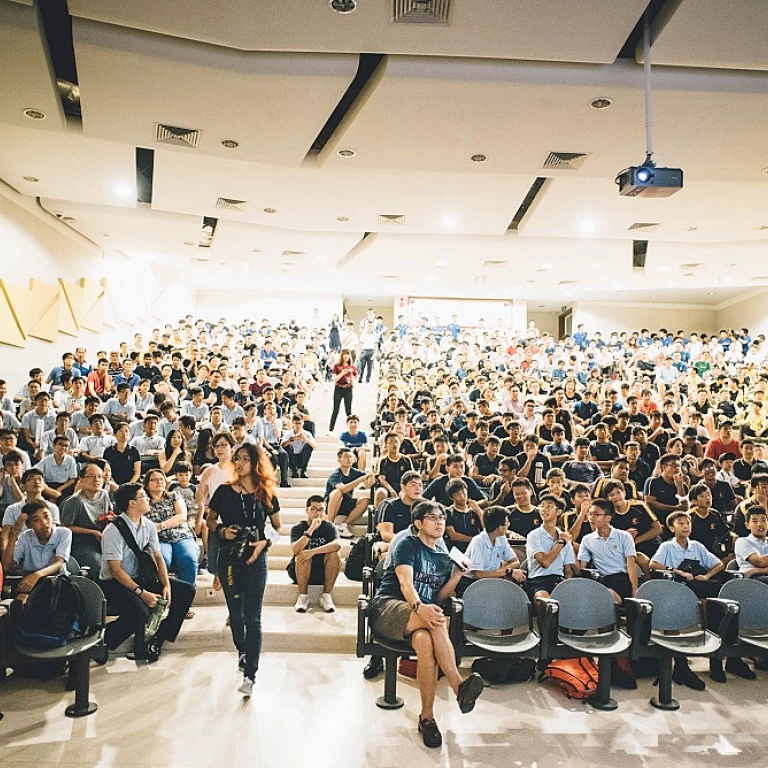
The Cost of High Employee Turnover
Examining the Financial Impact of Employee Churn
Employee turnover has become a significant concern for companies striving to maintain a competitive edge in today’s fast-paced business environment. The cost associated with high employee turnover extends far beyond the financial strain. It encompasses the loss of institutional knowledge, decreased employee engagement, and the potential negative impact on company culture. Companies must acknowledge the true cost of turnover to grasp the importance of implementing effective retention strategies.
Financially, businesses bear the burden of direct costs such as recruitment and training expenses. Recent surveys indicate that these costs can range from 50% to over twice an employee’s annual salary, depending on the job level. Additionally, indirect costs emerge from decreased productivity and lowered morale among remaining team members, affecting an organization’s overall performance. These challenges are particularly noticeable in fields requiring highly skilled workers, where the shift in personnel can disrupt operations and stifle innovation.
To mitigate turnover, businesses need to invest time and resources into understanding why employees leave. Decoding the underlying reasons can shed light on whether the issues are rooted in the work environment, lack of career advancement opportunities, or unaddressed employee needs for a healthy work-life balance. However, it's not just about investing in retention, but also in strategic talent acquisition from the onset, as discussed in Maximizing the Benefits of Advantage Resourcing in Talent Acquisition. Implementing robust strategies from the beginning ensures that the hired talent aligns with the organizational culture and stays engaged for the long term.
Ultimately, understanding and reducing the cost of turnover involves a dual approach: enhancing the employee experience and refining talent acquisition practices. By doing so, companies could improve retention rates, sustain organizational momentum, and build an environment where employees feel valued and poised for career advancement.
Identifying the Root Causes of Employee Attrition
Uncovering the Reasons Behind Employee Attrition
Understanding why employees leave a company is crucial for developing effective retention strategies. High employee turnover can be costly, not just in terms of financial resources but also in lost time and productivity. Identifying the root causes of employee attrition allows organizations to address these issues head-on and improve employee retention.
Several factors contribute to why employees decide to leave their jobs. One of the most significant is the lack of career advancement opportunities. When employees feel that their career growth is stunted, they are more likely to seek new opportunities elsewhere. Companies should focus on providing clear paths for professional development and career advancement to retain top talent.
Another common reason for employee turnover is a poor work environment. This includes not just the physical space but also the overall company culture and employee engagement levels. Employees who don’t feel valued or engaged are more likely to leave. Organizations should strive to create a positive work environment that fosters employee engagement and makes team members feel appreciated.
Work-life balance is another critical factor. In today’s fast-paced world, employees are increasingly prioritizing their personal lives alongside their careers. Companies that offer flexible work arrangements, such as remote work options, are more likely to retain employees who value this balance.
Compensation and benefits also play a significant role in employee retention. While salary is important, other benefits such as health insurance, retirement plans, and wellness programs can make a big difference in how employees perceive their job. Offering competitive compensation packages can help retain top talent and reduce turnover.
Lastly, the lack of alignment with the company’s values or mission can lead to employee attrition. When employees don’t feel connected to the organization’s goals, they may seek employment elsewhere. Ensuring that employees understand and align with the company’s mission can improve employee experience and retention.
For more insights on optimizing talent acquisition and addressing these challenges, consider exploring this strategic approach to resourcing in business.
The Role of Company Culture in Employee Retention
Impact of Organizational Culture on Employee Staying Power
A strong company culture can be a powerful magnet for both attracting and retaining top talent. Companies that invest in nurturing a positive work environment are more likely to see decreased employee turnover and higher levels of employee engagement. When employees feel a sense of belonging and alignment with their organization's values, they are more inclined to stay longer and contribute meaningfully to the organization's goals. Creating a culture that prioritizes work-life balance and promotes employee well-being can dramatically improve employee satisfaction. Employees who feel supported in maintaining a balance between their professional and personal lives are less likely to leave, as they experience reduced stress and enhanced job satisfaction. Offering flexible work arrangements such as remote work options is one practical way to demonstrate this commitment. Moreover, fostering an environment that encourages career advancement and professional development is crucial. When employees see a clear path for growth within the company, it reinforces their commitment to the organization. Companies can benefit from implementing structured career development programs that outline potential career paths and provide necessary resources for growth. Additionally, recognizing and rewarding employee contributions reinforces their sense of value and belonging, further strengthening retention efforts. A survey conducted across various industries indicates that employees leave organizations where they feel undervalued or disconnected. Thus, actively promoting a culture of inclusivity and open communication where team members feel heard and appreciated can mitigate common reasons for employee attrition. For organizations striving to effectively retain employees, evaluating their current culture and identifying areas of improvement is an essential step. Progressive companies regularly assess employee satisfaction and adapt their retention strategies accordingly. By doing so, they create a work culture that not only retains top talent but also attracts new skills and energies. To learn more about reaching the peak of talent acquisition and retention with proven strategies, explore this resource.Effective Talent Acquisition Strategies for Retention
Crafting Strategies to Attract and Retain Talent
In the quest to maintain low employee turnover within a company, an effective talent acquisition strategy plays a vital role. Organizations that fail to engage new hires from the outset often face challenges when attempting to improve employee retention in the long term. To tackle this, companies must focus on understanding and refining their internal processes to create a work environment that attracts and retains people effectively. There are several approaches businesses can adopt to enhance their talent acquisition strategies. These strategies focus on creating meaningful employee experiences and preparing companies to address the issues outlined in the other parts of our discussion.- Alignment with Organizational Culture: The alignment of talent acquisition strategies with company culture is essential. Prospective employees need to feel that the company's values resonate with their own, encouraging long-term commitment. During interviews, it’s crucial to discuss the organization’s mission, values, and expectations to ensure cultural compatibility early on.
- Emphasizing Career Advancement and Professional Development: Employees leave when they do not see opportunities for career growth or professional development. By highlighting clear career advancement paths, companies can appeal to top talent looking for something beyond a mere job change. A dynamic development program demonstrates an organization’s commitment to investing in its employees' futures.
- Promoting Work-Life Balance: The desire for a balanced work life is increasingly becoming a priority for professionals. To retain employees, companies should incorporate flexible work arrangements, such as remote work options, to meet varying employee needs, ultimately fostering employee satisfaction and engagement.
- Implementing a Comprehensive Onboarding Program: The time and effort invested in the initial stages of employment sets the tone for employee engagement and job satisfaction. A structured onboarding program can improve the employee experience, making it more likely that new hires will be committed to the organization in the long run.
- Utilizing Employee Engagement Surveys: Regularly conducting surveys offers insights into employee concerns and areas requiring improvement. Understanding what makes employees feel valued and motivated will help refine retention strategies and reduce turnover rates.
Leveraging Technology in Talent Acquisition
Harnessing Technology to Attract and Retain Talent
In today’s fast-paced world, leveraging technology has become an essential component of effective talent acquisition strategies. As companies strive to retain top talent while minimizing turnover, embracing the right tech tools can make a significant difference in enhancing the employee experience and fostering long-term engagement.
Firstly, integrating technology into the hiring process allows organizations to streamline recruitment efforts, making it easier to identify and attract qualified candidates. Advanced applicant tracking systems (ATS) and artificial intelligence-driven platforms can help filter through applications efficiently, ensuring that companies spend their time engaging with only the most suitable applicants.
Furthermore, data analytics plays a crucial role in understanding employee engagement and predicting turnover risks. By utilizing analytic tools, companies can gain insights into employee satisfaction levels and proactively address issues that could lead to attrition. This helps in creating a work environment that resonates with employees' values and career goals, thus improving retention.
Remote work capabilities facilitated by technology have also become increasingly important. The ability to offer flexible work arrangements not only appeals to potential candidates but also contributes significantly to employee retention by supporting better work-life balance. As more people value flexibility in their jobs, providing opportunities for remote work can differentiate a company as a desirable employer.
To truly capitalize on technology for retention, organizations should invest in platforms that support professional development and career advancement. Learning management systems (LMS) enable employees to access training materials and development programs anytime and anywhere, allowing them to upskill and pursue new career paths within the company.
Lastly, gathering feedback through regular employee surveys and performance reviews, supported by digital platforms, can offer valuable insights into areas needing improvement. By actively listening to team members and implementing their feedback, companies can enhance the overall employee experience, boosting morale and retention in the long term.
Measuring Success: Key Metrics for Employee Retention
Tracking the Journey to Retention Success
To understand the effectiveness of retention strategies and ensure long-term success in employee retention, organizations need to focus on key metrics that can provide insights into the employee experience. These indicators offer a clear picture of how well a company is doing in retaining its talent and can guide future steps in talent acquisition strategies.
- Employee Turnover Rate: This basic yet important metric indicates how many employees leave the organization over a given period. A high turnover rate suggests issues within the work environment or inadequate retention strategies. Regular analysis can help identify trends and potential causes, allowing companies to implement timely interventions.
- Employee Engagement Surveys: Engagement surveys provide direct feedback from employees about their satisfaction at work. By regularly conducting these surveys, companies can gauge how employees feel about their roles, teams, and the overall work atmosphere, leading to informed decisions for improvements.
- Time to Fill vs. Time to Productivity: Tracking how long it takes for new hires to become productive team members is crucial. This metric helps determine the efficiency of the onboarding process and whether employees receive the necessary support and training to succeed in their new roles.
- Career Advancement Opportunities: Monitoring the rate at which employees are promoted or take on greater responsibilities can indicate how successful a company is in fostering professional development and career growth. This can significantly enhance employee satisfaction and retention.
- Benefits Utilization: Analyzing how often employees use company-provided benefits, such as health, wellness programs, or career development initiatives, can reveal the perceived value of these offerings. It also highlights areas where benefits could be enhanced to better meet employee needs and improve retention.
By keeping a close watch on these metrics, companies can proactively address issues before they lead to increased employee turnover. It's essential not only to implement effective retention strategies but also to continually assess their effectiveness for ongoing improvement. This approach helps organizations retain top talent and fosters a thriving work environment where employees feel valued and motivated to stay.












